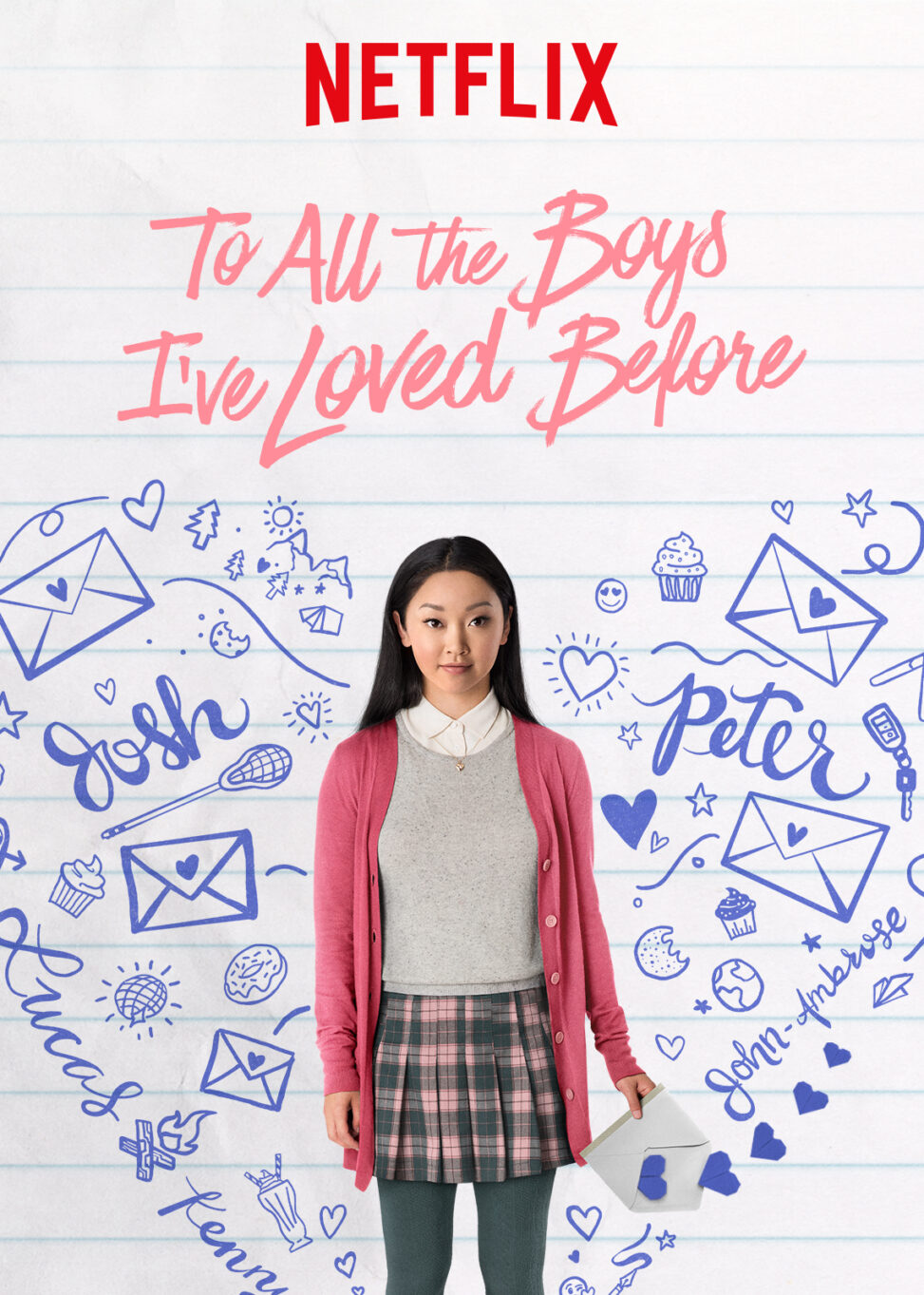Title: To All the Boys I’ve Loved Before
Released: August 17th 2018
Directed by: Susan Johnson
Access on: Netflix
Netflix Summary: When her secret love letters somehow get mailed to each of her five crushes, Lara Jean finds her quiet high school existence turned upside down.
Gaze Theory: Throughout the film, there were not many examples of gaze theory. The main female character, Laura Jean, had true character development; however, her entire character was rooted around love. Although there were images such as the scene with Jenavive where they had a close up shot of her face while she was flipping her hair, that seemed to sexualize the girls depicted in the film, none of them were truly objectified. It could be argued that Laura Jean and Jenavive were both sexualized because both characters were based on finding love. In Jenavive’s case, her character was known to be extremely sexual and to have sexual relationships with an older male character. Despite having subtly sexualized these female characters, the film did not utilize gaze theory because there were no clear examples of objectification.
Goffmanian Analysis: Although the film did not use Gaze Theory, there are many scenes in which the characters are stereotyped based on their gender. First, Laura Jean is depicted as a very small person compared to the men she has love affairs with. In one scene, a male character picks her up pointing out just how tiny she is. In multiple scenes of her and Peter kissing, Peter is depicted towering over her and having to lean down to kiss her which further points out her smallness and also indicates her subordination to him. Also, Laura Jean and her sister Margo are depicted as taking on the motherly role after she had passed away. In one scene Laura Jean must make cupcakes for her younger sister’s bake sale. Jenavive’s character also depicts stereotypical female traits. At the end of the movie, Laura Jean finds out that Jenavive has been angry with her since middle school because she kissed the boy she liked. This depicts Jen as a sort of psycho ex-girlfriend or the “crazy girl” stereotype.
Effect: I think this movie does a good job of depicting female characters as more than just sex objects. However, the movie is entirely based around love; this is Laura Jean’s only purpose throughout the movie. I think that this shows teenage girls that a woman’s purpose and goal is to find a man and that this will bring her ultimate happiness. The film also reinforces many feminine stereotypes. Laura Jean represents a gentle, pretty, small girl who is just looking for love. It also further pushes the narrative of women as domestic people who work within the household. In addition, although the film does not display conventional forms of Gaze theory, the female characters are still sexualized in the sense that they are young women being depicted as sexual beings. The characters are focused around men and sex which can influence young teenage girls watching who may come to think that this is the way they should also behave.
Shared by: Olivia Smidel
Image Credit: https://www.imdb.com/title/tt3846674/
